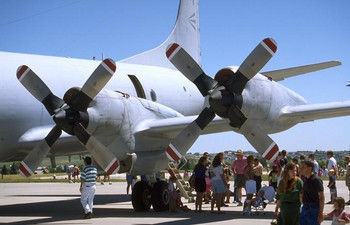Before you whisk your pet around the world, read some pet-travel tips shared by a veterinarian who is used to global pet travel and has written a one-stop resource for masters about to undertake air travel with pets.
Prior To Travel
- Make a reservation for your pet. Book a direct flight, if possible, and if you're traveling in hot weather, or to a warm climate, book a night flight.
- Check with the airline to see what papers you will need. Travel within the US usually requires only a standard health certificate. Travel outside of the US often requires an international certificate. American Airlines currently also asks for a Certificate of Acclimation (for pets traveling in the cargo hold), especially during winter months. It is best to call each airline individually, and then call them back to double check. Health Certificates usually need to be issued no more than 10 days prior to departure.
- Schedule an appointment with your doctor. Your pet must be in good health, and up-to-date on all vaccinations, including rabies.
- Sedation is often not required, but if it is a long flight, or the pet is easily stressed, a sedative can be given.
- Keep in mind that short-nosed animals (such as bulldogs and Boston terriers) cannot breathe as well in cargo areas.
- If the airline permits it, place your small pet in a carrier that will fit under the seat and carry him or her right on board with you. If you're thinking about having your pet fly in cargo, check with the airline first to see if that option is available. Cargo travel for animals is usually contingent upon the weather or your pet's weight. Generally, an airline will not fly a pet in cargo if the temperature is below 45°F or above 85°F, or if the pet weighs more than 100-150 lbs. For specific information on each airline and the costs involved, check out www.petsonthego.com. Note that many owners don't feed a pet less than six hours before traveling to avoid stomach upsets.
The Carrier
- Purchase a carrier large enough for your pet to stand, turn around, and lie down. It should be sturdy, and well-ventilated.
- Get your pet accustomed to the carrier prior to travel. Place his favorite toy or blanket inside, or a special food treat.
- Trim your pet's nails before the trip so they don't get caught in the carrier's door or ventilation holes.
- Write the words "LIVE ANIMAL" in bold, neat letters one inch down from the top of the carrier and on at least one other side. Indicate with arrows the upright position of the carrier.
- Write the name, address, and telephone number of the destination point of the animal. Secure this information to the top of the carrier.
The Flight
- To avoid delays and prolonged containment, try to arrange for nonstop or direct flights.
- Ask if you can watch your dog being loaded and unloaded from the plane.
- If your pet is traveling in the cargo hold, notify a crew member so they can prevent extreme temperatures.
- Line the bottom with shredded newspaper or towels, in case of an accident.
- Your pet should wear a collar with your name, address, and telephone number. Cat collars should be elastic, to prevent choking if they get caught or tangled.
- The carrier should have two dishes, one for food, and one for water. Attach them to the inside of the carrier. Freeze the water, so it will not splash during take off, but will melt by the time your pet is thirsty.
- For trips longer than 12 hours, attach a plastic bag containing dry food on top of the carrier so airline personnel can feed your pet in-transit. Write out clear and easy instructions.
- Do NOT lock the carrier. Make sure it is securely closed, but not locked, so that airline personnel can open it in case of an emergency.
Regulations for Pets on Board
Depending on your destination, all major airlines permit small dogs, cats and household birds to travel in the cabin with you. Requirements vary between airlines; all require that the pet must be placed in a carrier, which fits under the seat in front of you and charge a fee for transporting the pet. Crate carriers can be purchased from the airline, or you may use your own, as long as it meets the size requirement (c. 17" long x 12" wide x 7" high.) Many models are also FAA-approved. Because every airline has its own guidelines for pet travel, we recommend that you contact the airline of your choice to learn about their specific rules and regulations.
Dear Reader: This page may contain affiliate links which may earn a commission if you click through and make a purchase. Our independent journalism is not influenced by any advertiser or commercial initiative unless it is clearly marked as sponsored content. As travel products change, please be sure to reconfirm all details and stay up to date with current events to ensure a safe and successful trip.


